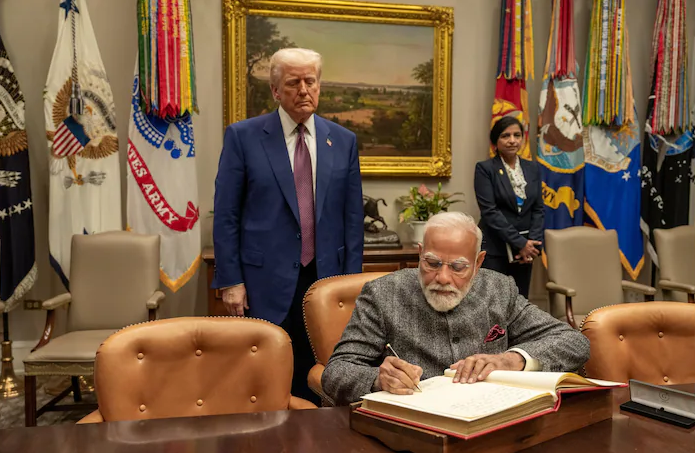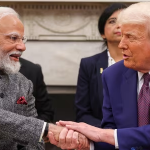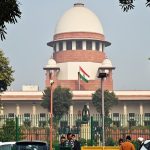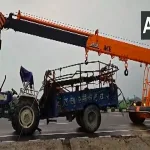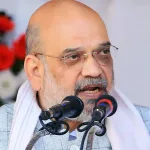The recent meeting between Indian Prime Minister Narendra Modi and former U.S. President Donald Trump has once again underscored the growing strategic and economic ties between the world’s two largest democracies. This engagement, held in Washington, D.C., carries significant implications for bilateral trade, defense cooperation, and global diplomacy. While both leaders have had multiple interactions in the past, this particular meeting is notable for its timing and its focus on long-term policy alignment between India and the United States. As India continues its rise as a formidable global power, it finds itself engaging with international stakeholders in a more assertive and pragmatic manner, ensuring that its relationships contribute to its overarching vision of economic growth, security, and strategic stability.
The relationship between India and the United States has undergone a remarkable transformation over the past few decades. From the days of the Cold War, when India maintained a non-aligned stance and had stronger ties with the Soviet Union, to the post-liberalization era of the 1990s, U.S.-India relations have matured into a broad-based partnership. The 21st century has witnessed an unprecedented strengthening of ties, particularly in defense cooperation, trade, technology exchange, and geopolitical collaboration.
Modi’s leadership has seen India position itself as a global power with a distinct foreign policy agenda. His ‘Act East’ policy, coupled with strategic outreach to Western nations, has significantly elevated India’s standing on the world stage. Trump, known for his transactional approach to foreign policy, has always emphasized economic gains and bilateral agreements, ensuring that any engagement with global partners is structured around a clear strategic and financial benefit. Despite these differences in leadership style, the two leaders have shared a personal rapport, evident in their large-scale public engagements such as the ‘Howdy Modi’ and ‘Namaste Trump’ events. These grand spectacles demonstrated not just personal camaraderie but also the deep-seated goodwill between the people of the two nations.
The discussions in Washington revolved around several crucial issues, each of which carries profound implications for both India and the United States. One of the most pressing matters on the agenda was trade. The economic ties between the two countries have strengthened significantly, but not without their fair share of disputes. The U.S. had previously withdrawn India’s Generalized System of Preferences (GSP) benefits, affecting several Indian exports. This meeting saw both leaders explore avenues for a fair and balanced trade agreement. While Modi advocated for greater market access for Indian pharmaceuticals and IT services, Trump pushed for reduced tariffs on American agricultural products and energy exports. Given that the United States remains one of India’s largest trading partners, both leaders recognized the necessity of recalibrating their trade relations to foster mutual growth.
The dialogue also covered defense cooperation, an area that has seen remarkable growth over the years. The Indo-U.S. defense relationship has deepened, with India emerging as a key player in regional security, particularly in the Indo-Pacific. The Trump administration’s backing of India’s security concerns, especially those arising from border tensions with China and terrorism threats from Pakistan, has been a notable aspect of this collaboration. The discussions in Washington touched upon the possibility of India acquiring advanced American military technology, including F-35 fighter jets and next-generation drones. Such acquisitions would not only bolster India’s defense capabilities but also solidify its position as a significant U.S. ally in the region. Intelligence sharing, joint military exercises, and the enhancement of the Quad alliance, which includes Japan and Australia, were also key points of discussion, reaffirming the growing military synergy between the two nations.
Beyond trade and defense, the issue of immigration was also prominently featured in the discussions. The Trump administration’s stringent immigration policies had impacted a considerable number of Indian professionals working in the United States, particularly those reliant on H-1B visas. Modi pressed for smoother visa processes, ensuring that Indian talent, which contributes immensely to the U.S. economy, would not face unnecessary barriers. Moreover, the issue of undocumented Indian immigrants facing deportation was addressed, with Modi assuring Trump that India would facilitate the repatriation of its citizens, provided due process was followed. Immigration policies are not merely about workforce mobility but also about ensuring the welfare of the Indian diaspora, which plays a crucial role in strengthening people-to-people ties between the two nations.
Geopolitical considerations also played an important role in the meeting. Given the ongoing tensions in the Middle East and the strategic concerns surrounding energy security, both leaders deliberated on how their nations could collaborate in ensuring stability in the region. India’s growing economic engagements with Gulf nations make regional peace a priority for New Delhi, and this aligns with Washington’s broader interests in maintaining global energy stability. The leaders also exchanged views on Iran’s nuclear ambitions, with both agreeing on the importance of ensuring non-proliferation and stability in the Persian Gulf. The Indo-Pacific region, which has become a critical theater of geopolitical contestation, was another significant aspect of the discussion. Both Modi and Trump reiterated their commitment to keeping the Indo-Pacific free and open, ensuring that no single power—implicitly alluding to China—dominates maritime trade routes.
Politically, this meeting holds great significance for both leaders. For Modi, a strong and visible partnership with the U.S. reinforces his image as a global statesman, showcasing India’s growing clout in international affairs. As the Indian economy expands and its global footprint increases, forging strategic partnerships with influential nations like the U.S. only strengthens its position. Trump, for his part, viewed India as a crucial ally in his broader realignment of American foreign policy. The relationship with India aligns with his administration’s objective of countering China’s influence while simultaneously ensuring that American economic interests are well-served. Given India’s large consumer base and its growing technological and defense capabilities, a robust relationship with New Delhi is of vital interest to Washington.
The significance of the Modi-Trump meeting goes beyond its immediate outcomes; it is reflective of a deeper, long-term commitment between two democracies that share common values, interests, and aspirations. Despite the differences that occasionally emerge—whether in trade negotiations, immigration policies, or strategic priorities—the fundamental trajectory of U.S.-India relations remains positive. With both nations striving towards a vision of economic prosperity, security, and global stability, this meeting reaffirmed their commitment to working together in an increasingly complex world order. The bond between India and the United States strengthened, through years of collaboration, dialogue, and mutual respect, is set to shape the geopolitical landscape for years to come.
(Author is RK Columnist and can be reached at:[email protected])


